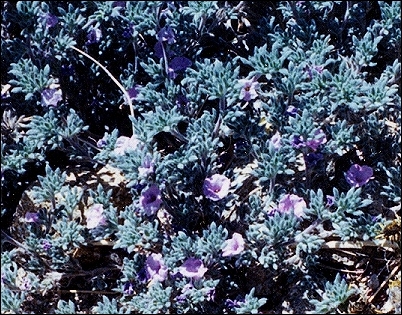

Beauty is in the eye of the beholder. For some, beauty means endless layers of green; for others, it's blooming flowers; and some prefer the beauty of man-made architecture to nature's handiwork.
When it comes to our Chihuahuan Desert, all too many people enjoy the broad vistas and glorious skies, but perceive the landscape as drab and devoid of beauty. But looks are deceiving, for the desert is secretive, often hiding its treasures from the unseeking eye.
Untold numbers of animals and plants live here, tucked away from casual
sight. The gifts of plants, such as the tiny, inconspicuous, but beautiful, Bristly
Coldenia flowers or the silvery leaves of Winterfat, must be seen at close quarters to
be appreciated. Camouflaged lizards and insects blend into the background, and a
variety of rodents live, love, and die under the cover of night. Amazing adaptations
are everywhere, apparent if one only looks—for the harsh climate of the desert is
a jealous master, and only those that have adapted survive.

Listen to the Audio (mp3 format) as recorded by KTEP, Public Radio for the Southwest.
Contributor: Kodi R. Jeffery, Centennial Museum, University of Texas at El Paso.
Desert Diary is a joint production of the Centennial Museum and KTEP National Public Radio at the University of Texas at El Paso.

Bristly Coldenia (Tiquilia hispidissima) plants hug the ground, and the blossoms are only a few millimeters in diameter, but to the discerning eye, add pleasing spots of color to the desert. Image from the Chihuahuan Desert Gardens by A.H. Harris.
The silvery leaves of the winterfat shrub contrast delightfully with the greenish and tannish tones of the desert. Image from the Chihuahuan Desert Gardens by A.H. Harris.
Bristly Coldenia also is known as Bristly Crinklemat. It is a member of the Boraginaceae (Borage Family) and many sources, particularly older ones, will list it as Coldenia hispidissima. Both it and Winterfat (Krascheninnikovia lanata; a synonym is Ceratoides lanata), a member of the Chenopodiaceae (Goosefoot Family), can be seen in the Chihuahuan Desert Gardens on the campus of the University of Texas at El Paso.
Desert USA on winterfat.